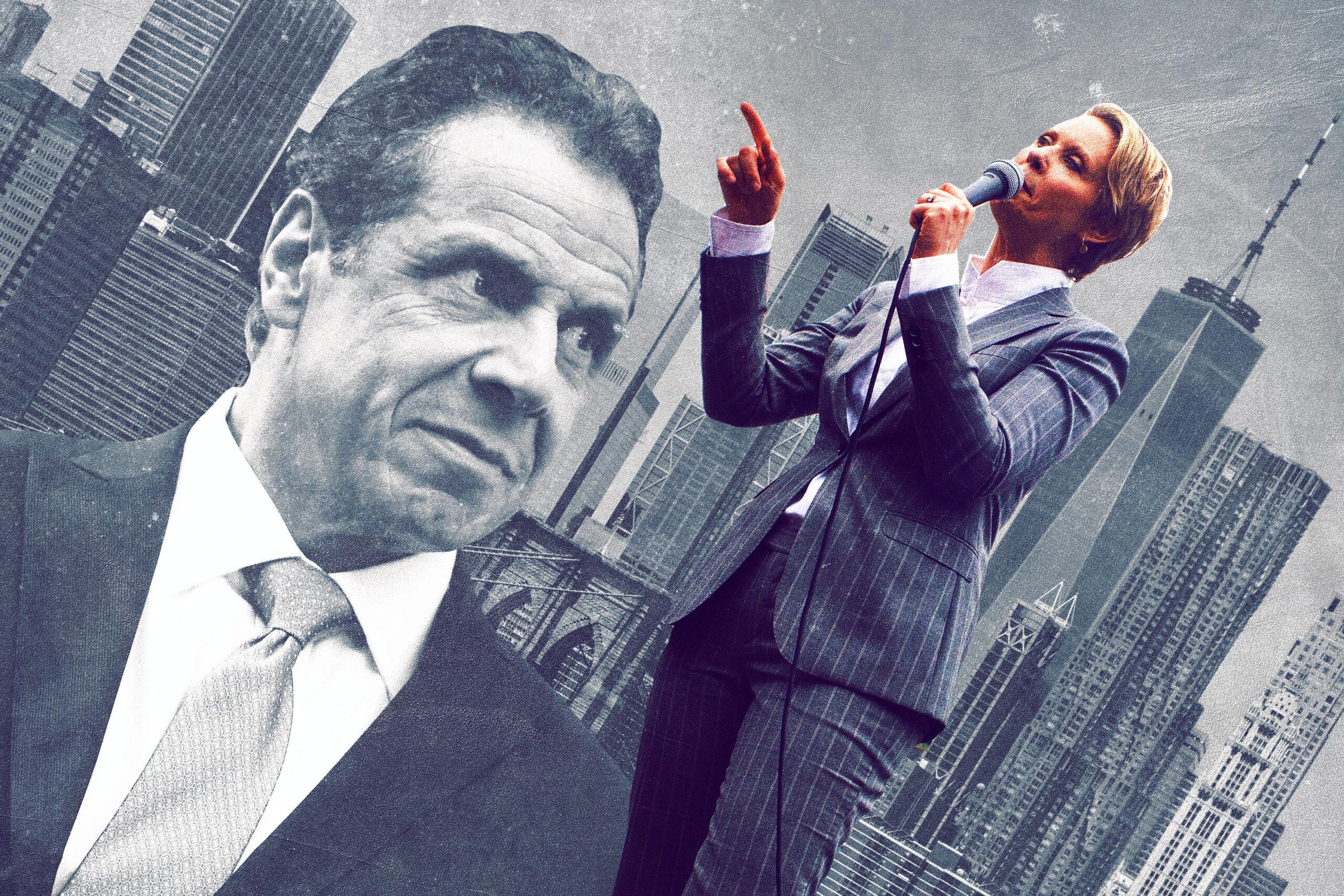
The turnout was high, the outcome was inevitable, but the race was nonetheless exhilarating. On Thursday, New York Governor Andrew Cuomo won the Democratic nomination for a third term. Cuomo defeated his leftist challenger, the actor and activist Cynthia Nixon, who turned an otherwise presumptuous reelection into a competitive spectacle. Her campaign is dead; her political significance is still in bloom. In defeat, Nixon has emerged as a crucial champion for leftist politics—the latest Bernie Sanders—heading into the November midterm elections.
For six months, Nixon pitched herself to voters as the radical and purposeful alternative to Cuomo, the cynical figurehead who has run New York since 2011. Nixon championed New York City subway repairs, “universal” rent controls, marijuana legalization, and immigrant protections. In her campaign launch, Nixon telegraphed a scathing critique of the incumbent governor, connecting him to corruption scandals, sluggish governance, and a lack of liberal ambition. Eagerly, Nixon embodied the promise of a Democratic leader, in a Democratic bastion, who would champion a new generation of left-wing politics.
From Albany, Cuomo answered Nixon’s challenge with a passive-aggressive reelection campaign, largely ignoring Nixon on the record but recruiting the full force of the Democratic establishment, including Hillary Clinton and Joe Biden, to support his reelection bid. Two weeks ago, Cuomo and Nixon met for their first and only gubernatorial debate together. The hour-long showcase made for a climactic confrontation, with Cuomo and Nixon trading potshots about ethics and their respective temperaments. “Can you stop interrupting?” Cuomo asked Nixon. “Can you stop lying?” Nixon responded.
The final week of campaigning proved especially ugly and contentious. On Saturday, Cuomo’s campaign mailed a voter pamphlet suggesting that Nixon, who attends synagogue, is anti-Semitic. Cuomo disavowed the pamphlet, calling the suggestion “wrong and inappropriate,” only for the New York Daily News to trace the mailing back to Larry Schwartz, one of Cuomo’s closest and most senior advisers. The controversy surrounding the mailer dogged Cuomo, even as the final statewide polling showed the governor leading Nixon by 40 percentage points. The race broke in Cuomo’s favor despite the abundant criticisms of his administration. Grudgingly, The New York Times endorsed Cuomo over Nixon despite his record: “He has done little to combat the corruption in the Legislature and his own administration, and he has allowed the subway system, the foundation of the New York City economy, to rot,” the editorial board wrote. The governor also received last-minute endorsements from a few more trivial figures, comedian Amy Schumer and rapper Nicki Minaj, two New York City natives whose Cuomo endorsements provoked some consternation among their respective fan bases. Schumer then switched her endorsement to Nixon with an Instagram post on election day while Nicki Minaj’s rival, Cardi B—a newcomer challenging a beleaguered hip-hop incumbent—also offered a last-minute endorsement of Nixon and the lieutenant governor challenger, Jumaane Williams.
The incumbent lieutenant governor, Kathy Hochul, defeated Williams in the final results. But several Democratic challengers defeated moderate incumbents, including former Independent Democratic Conference members who frequently aligned themselves with Senate Republicans throughout Cuomo’s terms as governor.
The late celebrity endorsements regarding Cuomo and Nixon were a frivolous and, surprisingly, convoluted development. Still, Nixon’s campaign against Cuomo was far less defined by celebrity showmanship than Donald Trump’s presidential bid. Nixon ran as Nixon, not as Miranda Hobbes, her most popular character, from Sex and the City. She presented herself as an activist, and she did indeed win a great deal of enthusiasm from fellow activists, and disaffected Democrats, throughout the state. She could not overcome Cuomo’s great spending advantage. Nixon did, however, help excite a Democratic base in sore need of mobilization on the eve of the midterms.
Nixon’s defeat marks an end, but also a beginning. Her campaign was the early catalyst for several leftist challengers mounting campaigns against Democratic incumbents throughout the summer. Socialist candidate Alexandria Ocasio-Cortez won the Democratic nomination for Congress, defeating incumbent Joe Crowley, who represents parts of the Bronx and Queens. That primary upset encouraged a wider movement of leftists and socialist challengers, along with the Nixon campaign. Nixon and Ocasio-Cortez have both advocated for dismantling U.S. Immigration and Customs Enforcement; they’ve both championed criminal justice reform. Indeed, the Democratic Socialists of America has cultivated a new class of left-wing candidates, such as Ocasio-Cortez and state Senate candidate Julia Salazar in New York, for elected office all across the country. New York has become a state laboratory for the left’s great, national experiment.
As for the state of New York, Nixon’s primary challenge has inarguably weakened Cuomo in the long term. A year ago, Cuomo had already begun to adopt a more progressive posture in anticipation of his rumored presidential bid; reportedly, he hopes to face Trump in the 2020 presidential election. Nixon’s campaign against Cuomo’s re-election seemingly forced the governor to embrace new political priorities, including staunch opposition of ICE (“They’re a bunch of thugs,” Cuomo says) and marijuana legalization. In this sense, Nixon represents the dual purpose of the current left-wing insurgency—to elect new left-wing leaders while also revising the overall direction of the Democratic Party.
There are almost eight weeks between the New York gubernatorial primaries and the midterm elections. The Democrats are now within striking distance of recapturing both houses of Congress; the socialist left stands a chance of leading the new Democratic majority through the 2020 presidential election. Nixon’s mission is bigger than her gubernatorial campaign, and it’s bigger than New York. Throughout the summer, Ocasio-Cortez traveled the country, lending her endorsement to fellow leftist challengers and addressing their campaign rallies. Bernie Sanders joined her. So, too, might Nixon, whose left-wing campaign against the Democratic establishment continues in the more favorable—and more hopeful—national context.

